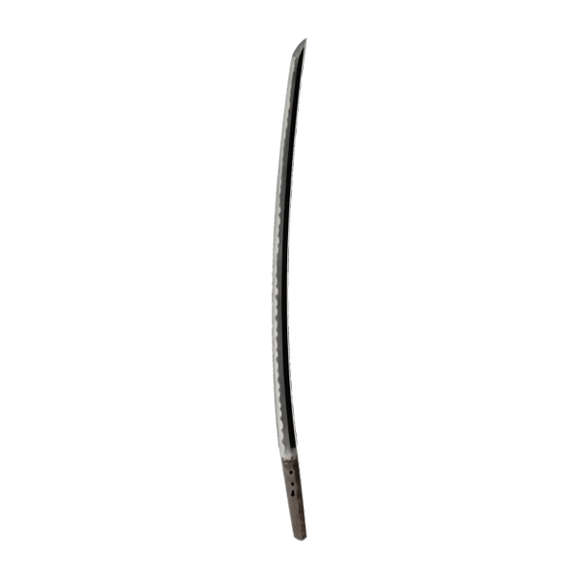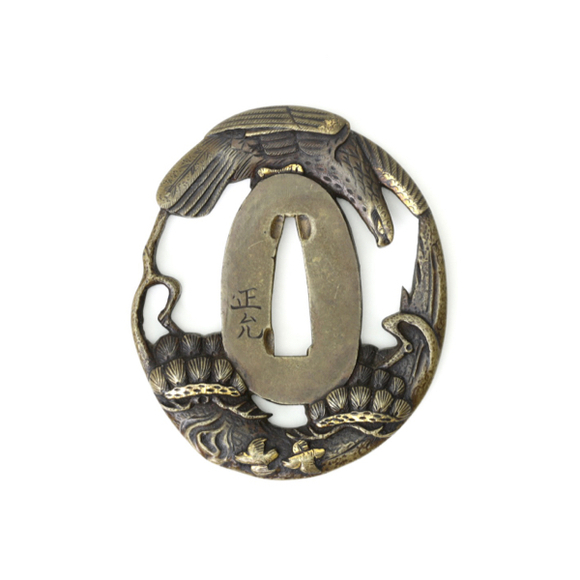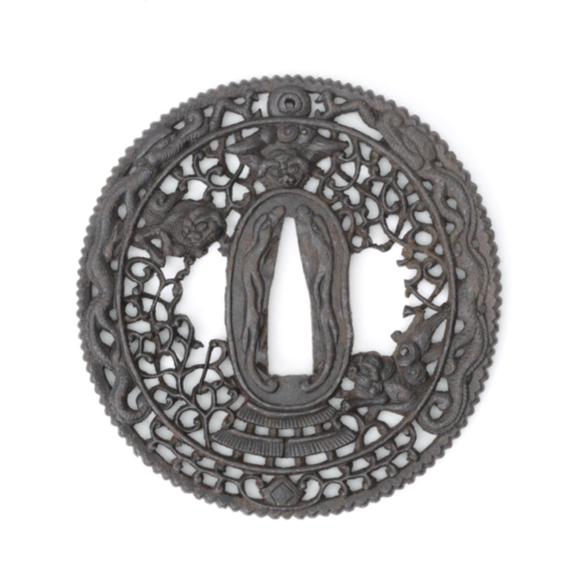Description
Yosōzaemon Sukesada (1467-1542) was one of many smiths of the village Osafune in Bizen who signed their work with Sukesada (祐定). Yosōzaemon however was regarded as the best smith, not only of his school but quite possibly of Japan at the time. He was mainly active in the early 1500s, with extant swords dating to mainly the Eishō (永正, 1504-1521) and Daiei (大永, 1521-1528) periods.
Fujishiro Matsuo rated his works sai jō saku (最上作), the highest possible classification reserved for grand masters, and Yamada Asaemon V ranked Yosozaemon's swords as ō-wazamono for extreme sharpness.
He was the son of Hikobei no Jō Sukesada (彦兵衛尉祐定), a master swordsmith in his own right and together with his son the two top smiths of Bizen at the time.
Working style
Yosōzaemon primarily made uchigatana and some tanto. He mainly worked in the Sue-Bizen style, what made him stand apart was his superior forging of a fine and tight mokume and itame hada.
He tempered in a nioi-based hamon in suguha, gunome-midare-choji and more flamboyant, hitatsura style tempering. He is thought to have pioneered the so-called kani no tsume (蟹の爪), “crab claw” hamon seen in the below photo.

Yosōzaemon's signature "crab claw" hamon.
The steel tends to looks bright and silvery with ji nie that may form chikei. Sometimes faint utsuri can be present. The boshi is a continuation of the hamon, often different on both sides, and usually with a deep kaeri.
"His kitae is considered to be the best of his time, so when considering a piece that is extremely well forged, with otherwise typical Sue Bizen characteristics, Yosozaemon should come to mind."
-Darcy Brockbank
yuhindo.com
A peculiar feature of his work is that he finished his tangs with a rounded back near the base of the blade, flattening out near the tip.
Notable works
At the time of writing, 54 swords by Yosōzaemon have attained Juyo Token papers.
One of his best swords is a katana he made for a certain Kuriyama Yokurō, dated 1521.1
This sword combines two different types of hamon (temperline), a gunome midare (wavy) on the top half and a chu-suguha (straight) on the bottom half.

Katana for Kuriyama Yokurō.
Another important work is the Yamanaka Yukimori katana, ranked Juyo Bijutsuhin (important work of art).

Yamanaka Yukimori katana by Yosōzaemon Sukesada.
An extremely fine piece, executed in hitatsura was sold by Darcy Brockbank of yuhindo.com.
Notes to notable works
1. Published in Kanzan Satō; The Japanese Sword. Kodansha International and Shibundo. 1971. At the time of writing, the sword was in the collection of Okano Tarōmatsu.






